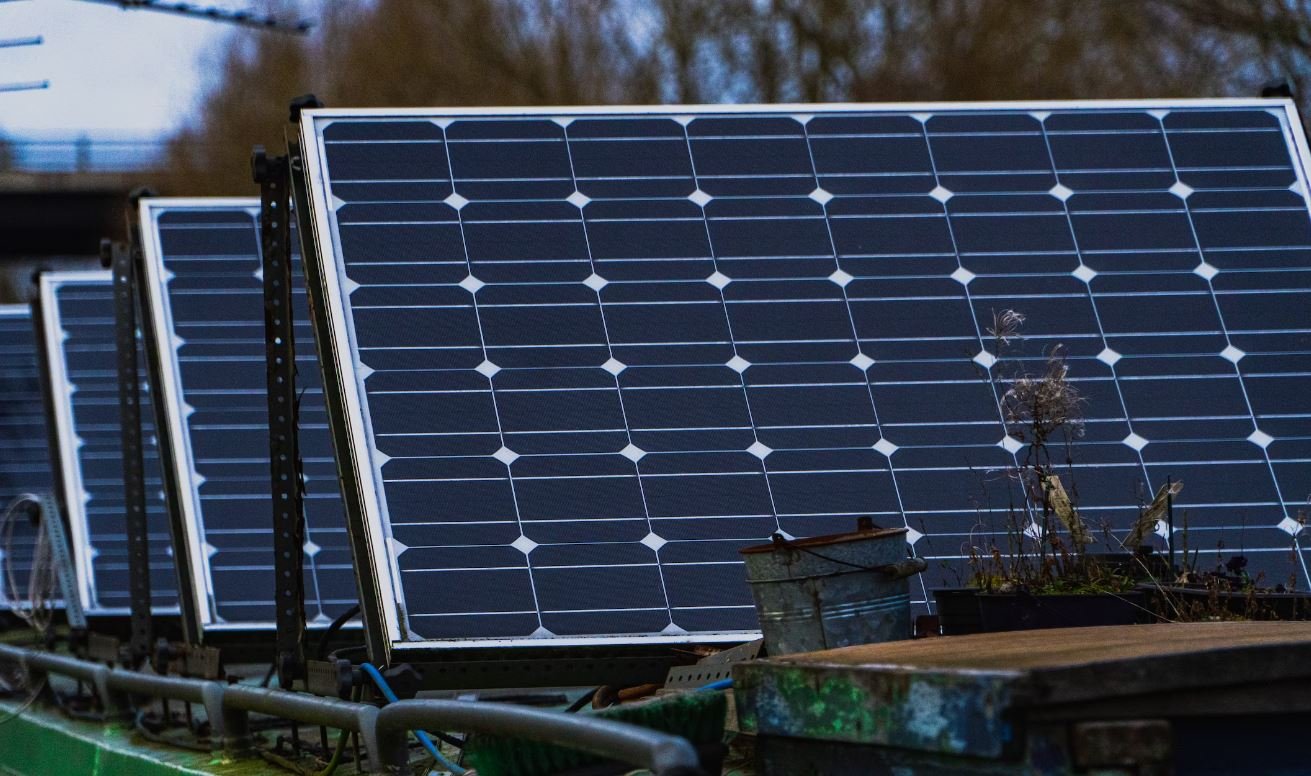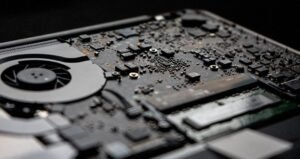SpaceX NASA
SpaceX and NASA have been working together to revolutionize space exploration with groundbreaking missions and advancements in technology.
Key Takeaways:
- SpaceX and NASA partnership
- Revolutionizing space exploration
- Missions and technological advancements
SpaceX, founded by Elon Musk in 2002, is a private aerospace manufacturer and space transportation company. It has collaborated with NASA on several missions, including delivering cargo and crew to the International Space Station (ISS). SpaceX has successfully developed the Falcon 9 rocket and Dragon spacecraft, which have become crucial assets for both commercial and government space missions around the world.
SpaceX’s partnership with NASA has significantly advanced space exploration capabilities. The collaboration has not only reduced the cost of space travel, but it has also stimulated competition and innovation in the industry.
Milestones Achieved:
- Successful cargo resupply missions to the ISS
- First privately-funded spacecraft to reach orbit
- First commercial spacecraft to dock with the ISS
Missions and Technological Advancements:
SpaceX has achieved remarkable milestones, including:
- Launching the Falcon Heavy, the world’s most powerful operational rocket, capable of carrying heavy payloads into space.
- Developing reusable rocket technology to reduce launch costs and make space travel more sustainable.
- Testing the Starship prototype, a next-generation spacecraft with the potential to carry humans to Mars and other destinations in the solar system.
| Mission | Date | Purpose |
|---|---|---|
| Dragon CRS-1 | October 8, 2012 | Cargo resupply to the ISS |
| Dragon CRS-20 | March 7, 2020 | Cargo resupply to the ISS |
| Milestone | Date |
|---|---|
| First successful Falcon 1 launch to orbit | September 28, 2008 |
| First privately-funded spacecraft to reach orbit | December 9, 2010 |
| Rocket | Payload to LEO | Payload to GTO |
|---|---|---|
| Falcon 1 | 0.67 tons | 0.27 tons |
| Falcon 9 | 22.8 tons | 8.3 tons |
Through their combined efforts, SpaceX and NASA have transformed the future of space exploration. They continue to push boundaries and inspire a new generation of scientists, engineers, and space enthusiasts.
SpaceX and NASA’s collaboration represents a remarkable partnership that drives innovation and exploration beyond Earth’s limits. From cargo resupply missions to the ISS to pioneering reusable rocket technology, their achievements have propelled the space industry forward.

Common Misconceptions
1. SpaceX is a branch of NASA
One common misconception is that SpaceX is a branch or subsidiary of NASA. However, SpaceX is actually a private aerospace company founded by Elon Musk in 2002. While NASA and SpaceX have collaborated on various projects, they are distinct entities with different goals and sources of funding.
- SpaceX is an independent company, not owned or controlled by NASA
- NASA has chosen to partner with SpaceX on missions, but they also work with other private companies
- SpaceX’s primary objective is to facilitate the colonization of Mars, while NASA’s goals include scientific exploration and research
2. NASA pays SpaceX for its services
Another misconception is that NASA pays SpaceX for its services, similar to a traditional contractor-client relationship. In reality, NASA hires SpaceX as a commercial partner under commercial crew and cargo contracts. These contracts provide funding to SpaceX for delivering cargo to the International Space Station (ISS) and developing crewed spacecrafts.
- SpaceX operates as a commercial entity, earning revenue from various sources, including NASA contracts
- While NASA provides funding to SpaceX, it is not a direct payment for services rendered
- The partnership allows NASA to support the commercial space industry and promotes competition among private companies
3. SpaceX only focuses on space exploration
One misconception is that SpaceX’s sole focus is on space exploration. While the company is known for its ambitious Mars colonization plans, it also has broader goals and initiatives beyond space exploration.
- SpaceX has a focus on developing reusable rocket technology to reduce the cost of space travel
- The company operates commercial satellite launches to provide internet connectivity through its Starlink project
- SpaceX is actively involved in the development of advanced technologies, such as the Hyperloop high-speed transportation system
4. SpaceX’s rockets are identical to NASA’s
Many people assume that SpaceX’s rockets, such as the Falcon 9 and Dragon spacecraft, are identical or similar to NASA’s Saturn V or Space Shuttle vehicles. However, SpaceX’s rockets are considerably different in design, functionality, and purpose.
- SpaceX’s rockets are designed with reusability in mind, while NASA’s rockets were traditionally expendable
- The Falcon 9 is capable of vertical landing and reuse, a feature not found in NASA’s historic launch vehicles
- SpaceX’s Dragon spacecraft is specifically designed for cargo and crew transport, while NASA’s shuttles had more capabilities and were reusable to some extent
5. SpaceX has unlimited funding from NASA or the government
Contrary to popular belief, SpaceX does not have unlimited funding from NASA or the government. While the company has secured significant contracts and partnerships, it operates as a privately funded venture.
- SpaceX has raised funds from private investors, including venture capital firms
- The company generates revenue through commercial launches, satellite contracts, and government contracts
- SpaceX’s aim is to become self-sustainable, reducing dependence on external funding sources

SpaceX Launches
Since its founding in 2002, SpaceX has made significant advancements in space exploration. The table below highlights some of SpaceX’s notable launches and their respective mission objectives.
| Mission | Date | Payload | Mission Objective |
|---|---|---|---|
| CRS-1 | October 8, 2012 | Dragon spacecraft | First successful resupply mission to the International Space Station (ISS) |
| SES-8 | December 3, 2013 | Telecommunication satellite | Deployment of satellite to provide enhanced communication services in Southeast Asia |
| CRS-3 | April 18, 2014 | Dragon spacecraft | Delivery of supplies and experiments to the ISS |
| CRS-4 | September 21, 2014 | Dragon spacecraft | Resupply mission to the ISS, including delivery of 3D printer for space station use |
| Falcon Heavy Test Flight | February 6, 2018 | Tesla Roadster | Demonstration flight of SpaceX’s powerful heavy-lift rocket and payload delivery to deep space |
NASA Missions
NASA, established in 1958, has consistently pushed the boundaries of scientific discovery. The table below showcases some remarkable missions undertaken by NASA throughout its history.
| Mission | Date | Objective | Findings |
|---|---|---|---|
| Apollo 11 | July 16-24, 1969 | First crewed mission to the Moon | Neil Armstrong becomes the first person to set foot on the lunar surface |
| Viking 1 | August 20, 1975 | Search for life on Mars | Provided evidence suggesting the absence of organic material on Mars |
| Voyager 2 | August 20, 1977 | Exploration of outer Solar System | Provided unprecedented data from encounters with Jupiter, Saturn, Uranus, and Neptune |
| Hubble Space Telescope | April 24, 1990 | Observation of deep space | Revolutionized our understanding of the universe and confirmed the existence of dark energy |
| Curiosity Rover | November 26, 2011 | Investigation of Martian geology and climate | Discovered evidence of past habitable conditions and organic molecules on Mars |
SpaceX Reusability
One of SpaceX’s groundbreaking achievements is the development of reusable rockets. The table below showcases the successful reusable launches conducted by SpaceX.
| Flight | Date | Reused Stage Number | Payload |
|---|---|---|---|
| SES-10 | March 30, 2017 | 1 | Communication satellite |
| CRS-11 | June 3, 2017 | 1 | Dragon spacecraft |
| BulgariaSat-1 | June 23, 2017 | 2 | Communication satellite |
| SES-11/EchoStar 105 | October 11, 2017 | 2 | Communication satellite |
| Bangabandhu-1 | May 11, 2018 | 1 | Communication satellite |
NASA Exoplanet Discoveries
NASA’s Kepler Space Telescope has played a crucial role in the discovery of exoplanets. The following table presents some noteworthy findings by NASA in the search for worlds beyond our solar system.
| Exoplanet | Star | Distance from Earth (light-years) | Size | Orbital Period |
|---|---|---|---|---|
| Kepler-22b | Kepler-22 | 617 | 2.4 times Earth’s radius | 290 days |
| TRAPPIST-1e | TRAPPIST-1 | 39 | 0.92 times Earth’s radius | 6.1 days |
| WASP-18b | WASP-18 | 325 | 10.9 times Jupiter’s radius | 0.94 days |
| HD 209458b | HD 209458 | 158 | 1.4 times Jupiter’s radius | 3.5 days |
| Kepler-452b | Kepler-452 | 1,400 | 1.63 times Earth’s radius | 385 days |
SpaceX Starship Missions
The SpaceX Starship is a next-generation fully reusable spacecraft designed for missions to the Moon, Mars, and beyond. The following table highlights some planned and potential future missions for the SpaceX Starship.
| Mission | Target Destination | Purpose |
|---|---|---|
| Artemis 1 | Moon | Uncrewed test flight as part of NASA’s Artemis program |
| DearMoon | Lunar flyby | Space tourism mission planned by Japanese billionaire Yusaku Maezawa |
| Red Dragon | Mars | Proposed mission to deliver payloads, technology, and resources to Mars |
| Starship HLS | Moon | Human Landing System to support NASA’s Artemis program and lunar missions |
| Starship Mars | Mars | Potential future mission to transport humans and cargo to establish a colony on Mars |
NASA Mars Rovers
NASA has deployed several rovers to explore the challenging terrain of Mars. The table below presents key information about these robotic explorers.
| Rover | Mission Duration | Mass (kg) | Power Source | Notable Discoveries |
|---|---|---|---|---|
| Sojourner | 85 sols (days) | 11.5 | Solar panels | First successful Mars rover, provided valuable data on Martian geology |
| Spirit | 2,269 sols (6 years, 98 days) | 185 | Solar panels | Discovered evidence of past water and geological formations on Mars |
| Opportunity | 5,498 sols (15 years, 170 days) | 185 | Solar panels | Identified signs of ancient water and potential habitable environments on Mars |
| Curiosity | 3,153 sols (8 years, 156 days and counting) | 899 | Radioisotope thermoelectric generator (RTG) | Confirmation of past habitable conditions and the discovery of organic molecules on Mars |
| Perseverance | Active mission as of July 2021 | 1,025 | Radioisotope thermoelectric generator (RTG) | Seeking signs of ancient life, collecting samples for future return to Earth |
SpaceX Commercial Spaceflights
SpaceX’s mission to make space accessible for commercial purposes has led to partnerships with various customers. The table below showcases some of SpaceX’s commercial spaceflight operations.
| Launch | Customer | Payload | Purpose |
|---|---|---|---|
| Iridium NEXT Mission 1 | Iridium Communications | 10 communication satellites | Replacement and expansion of Iridium’s satellite network |
| SpaceX CRS-16 | NASA | Dragon spacecraft | Delivery of supplies and experiments to the ISS |
| CRS-17 | NASA | Dragon spacecraft | Resupply mission to the ISS, with experiments and research equipment |
| Starlink L14 | SpaceX | 60 Starlink internet satellites | Expansion of SpaceX’s global satellite internet constellation |
| NROL-76 | National Reconnaissance Office (NRO) | Classified payload | NRO’s first dedicated launch with SpaceX |
NASA’s Great Observatories
NASA has deployed a series of powerful space observatories to capture incredible images of the universe. The following table presents information about NASA’s “Great Observatories.”
| Observatory | Year Launched | Telescope Type | Key Discoveries |
|---|---|---|---|
| Hubble Space Telescope | 1990 | Reflecting | Detailed images of galaxies, nebulae, and observations of distant supernovae |
| Chandra X-ray Observatory | 1999 | X-ray | Study of high-energy phenomena such as black holes, supernova remnants, and galaxy clusters |
| Spitzer Space Telescope | 2003 | Infrared | Investigation of distant galaxies, formation of stars, and detection of exoplanets |
| Compton Gamma Ray Observatory | 1991-2000 | Gamma-ray | Mapping of celestial gamma-ray sources, including gamma-ray bursts and pulsars |
| James Webb Space Telescope | Planned launch: 2021 | Reflecting | Observations of the first galaxies, formation of stars and planetary systems |
Conclusion
The collaboration between SpaceX and NASA has revolutionized space exploration. SpaceX’s impressive launches, reusable rockets, and visionary missions, alongside NASA’s groundbreaking discoveries, exoplanet missions, and Mars rovers, have propelled humanity’s understanding of the universe to new heights. The combined efforts of these space agencies have opened doors to space tourism, potential colonization of Mars, and deeper explorations of celestial bodies. As the ambition and innovation continue, the future of space exploration holds infinite possibilities.
Frequently Asked Questions
SpaceX and NASA
- What is SpaceX?
- What is NASA?
- What is the relationship between SpaceX and NASA?
- What are some notable achievements of SpaceX?
- What are some notable achievements of NASA?
- How does SpaceX contribute to space exploration?
- Can anyone travel to space with SpaceX or NASA?
- How does SpaceX’s Starship differ from the Falcon rockets?
- What are the advantages of reusable rockets?
- What are the future plans of SpaceX and NASA?




